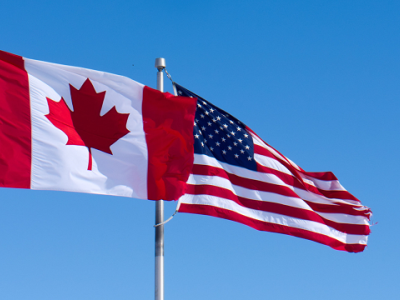Manitobans are almost evenly divided on the question of whether to introduce a new provincial flag, but opposition to the idea is somewhat more intense. Overall, 49 per cent of Manitobans would like to replace Manitoba’s current flag. This includes fewer than one in five (16%) who are strongly in favour and one-third (33%) who are somewhat supportive. Meanwhile, 51 per cent of Manitobans oppose changing the flag, including more than one-quarter (27%) who strongly oppose this idea.
There are strong divisions within Manitoba on this issue. Winnipeggers are much more likely than rural Manitobans to support replacing the current flag, with younger adults also heavily favouring the idea of a new symbol for the province. Those who would vote for the current NDP government are more than three times as likely as Progressive Conservative (PC) supporters to want to change the flag, with four in five who prefer the PCs indicating they are opposed.
Manitobans are also evenly split on whether the flag should better reflect the Indigenous peoples who live here, with similar proportions agreeing – and disagreeing – that it is no longer appropriate for the flag to contain colonial British symbols such as the Union Jack and St. George’s Cross. A plurality also agree that Manitoba’s flag is too similar to Ontario’s standard (with the bison crest being the only substantive difference). Nearly one-quarter, though, are unsure whether Manitoba’s standard too closely resembles that of Ontario.
Four in ten, meanwhile, agree they would be very upset if Manitoba changed its current flag, including more than one in five who strongly agree, compared to more than one-half who would not be upset about this. More than two-thirds of PC supporters indicate they would be very upset if a new flag was introduced, compared to just one-quarter of NDP supporters and three in ten Manitoba Liberal supporters. Rural Manitobans and older residents are also more likely to express strong displeasure with this idea.
The Story
For several years, there has been a low-level debate about the appropriateness of Manitoba’s provincial symbols. Things came to a head in 2021 when a statue of Queen Victoria on the lawn of the Manitoba Legislature was pulled down by protestors on Canada Day. While the provincial flag hasn’t been at the centre of these debates, there has been discussion about whether Indigenous peoples and those of other backgrounds feel well represented by the flag – which was officially adopted in the mid-1960s as a reaction to Canada’s decision to replace the similar-looking Red Ensign with the current maple leaf.
The results of our survey suggest that if the provincial NDP seriously proposed introducing a new flag, the government would have some degree of support from its base – Winnipeggers, younger Manitobans and (importantly) Indigenous residents of the province. However, any new flag would almost certainly face a fierce headwind of opposition, especially among older Manitobans and those in rural Manitoba.
Methodology
Probe Research surveyed 800 adults residing in Manitoba from August 1st to 9th, 2024.
Those who responded to the online survey are members of Probe Research’s proprietary panel, as well as members of another national online panel.
Because an online panel is a non-probability sample, no margin of error can be ascribed. For the purposes of comparison, a probabilistic sample of N=800 Manitoba adults would have a margin of error of ± 3.46 percentage points, 19 times out 20. The margin of error would be higher within each of the survey’s population sub-groups.
Minor statistical weighting has been applied to this sample to ensure that age, gender and regional characteristics properly reflect known attributes of Manitoba’s population. As well, the data has been weighted to reflect voting patterns in the last provincial election. All data analysis was performed using SPSS statistical analysis software.
Disclosure Statement
Probe Research is a member of the Canadian Research Insights Council (CRIC) and confirms that this research fully complies with all CRIC Standards including the CRIC Public Opinion Research Standards and Disclosure Requirements. Learn more at: https://www.canadianresearchinsightscouncil.ca/standards/por/



